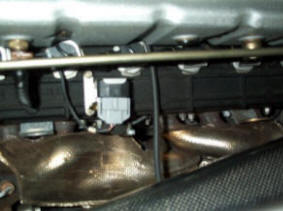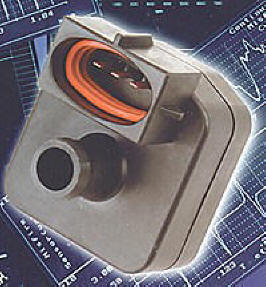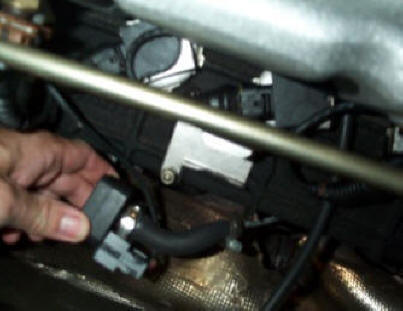 |
The LIE computer
system in Diablo and later cars is a state of
the art system for getting the maximum power out of the engine.
It has a very sophisticated system of diagnostic tests that run
in real time to check that the engine is running properly. Even minor
out of specs changes in engine performance are flagged to
the driver in the form of the Left or Right "Check Engine"
light.
There are many questions and comments on the web as to the
understanding of the "Check Engine" indicator. Some simple diagnostic tests
for these lights are given in other sections of this web site.
The LIE computer has a number of sensors to determine how your engine is
running. One, is a set of sensors called "Engine Misfire"
sensors. These sensors are located on the left and right sides
of the engine (Fig 1). They should be checked periodically to
make sure the hose connection to them is not leaking. |
| Figure 1. Diablo
Engine Misfire Sensor |
First a few words about the engine Misfire Sensor. The sensor
itself
is made by a company in California called
Kavlico (fig 2).
In summary, the misfire detection sensor is capable of sensing a spark
ignition misfire under all load conditions from idle speed to about 6000
rpm by monitoring each exhaust manifold separately. It is installed
between the engine and catalytic converter. The sensor has the
capability of detecting increasing resistance to flow through the
catalytic converter, to initiate a warning to the engine operator. The
sensor is used in conjunction with Kavlico's decision logic circuit
which is based on the use of a Motorola MC68HC11 microcontroller. The
output from this controller is sent to the Lamborghini LIE computer.
|


